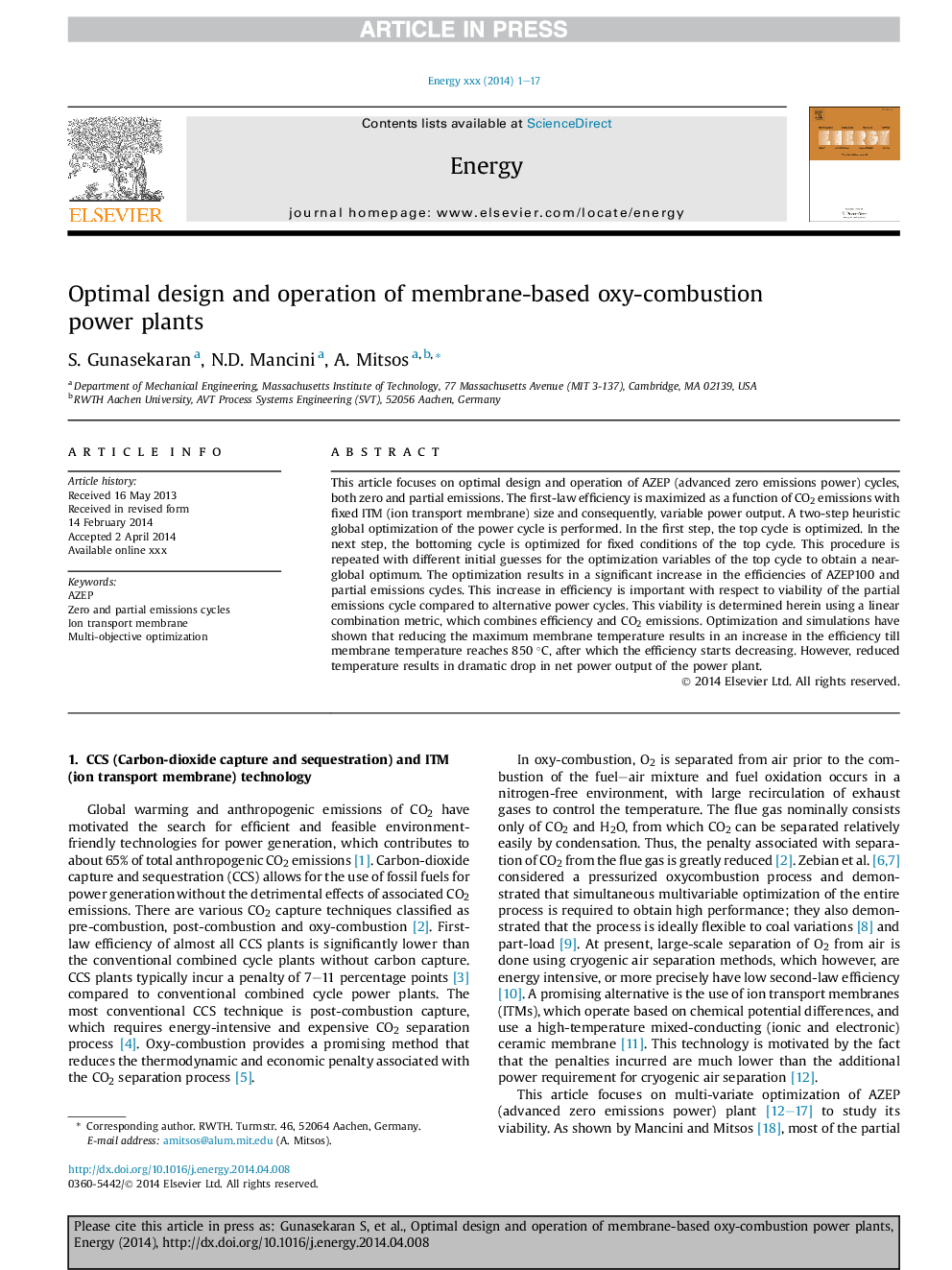| Article ID | Journal | Published Year | Pages | File Type |
|---|---|---|---|---|
| 8077617 | Energy | 2014 | 17 Pages |
Abstract
This article focuses on optimal design and operation of AZEP (advanced zero emissions power) cycles, both zero and partial emissions. The first-law efficiency is maximized as a function of CO2 emissions with fixed ITM (ion transport membrane) size and consequently, variable power output. A two-step heuristic global optimization of the power cycle is performed. In the first step, the top cycle is optimized. In the next step, the bottoming cycle is optimized for fixed conditions of the top cycle. This procedure is repeated with different initial guesses for the optimization variables of the top cycle to obtain a near-global optimum. The optimization results in a significant increase in the efficiencies of AZEP100 and partial emissions cycles. This increase in efficiency is important with respect to viability of the partial emissions cycle compared to alternative power cycles. This viability is determined herein using a linear combination metric, which combines efficiency and CO2 emissions. Optimization and simulations have shown that reducing the maximum membrane temperature results in an increase in the efficiency till membrane temperature reaches 850 °C, after which the efficiency starts decreasing. However, reduced temperature results in dramatic drop in net power output of the power plant.
Related Topics
Physical Sciences and Engineering
Energy
Energy (General)
Authors
S. Gunasekaran, N.D. Mancini, A. Mitsos,
